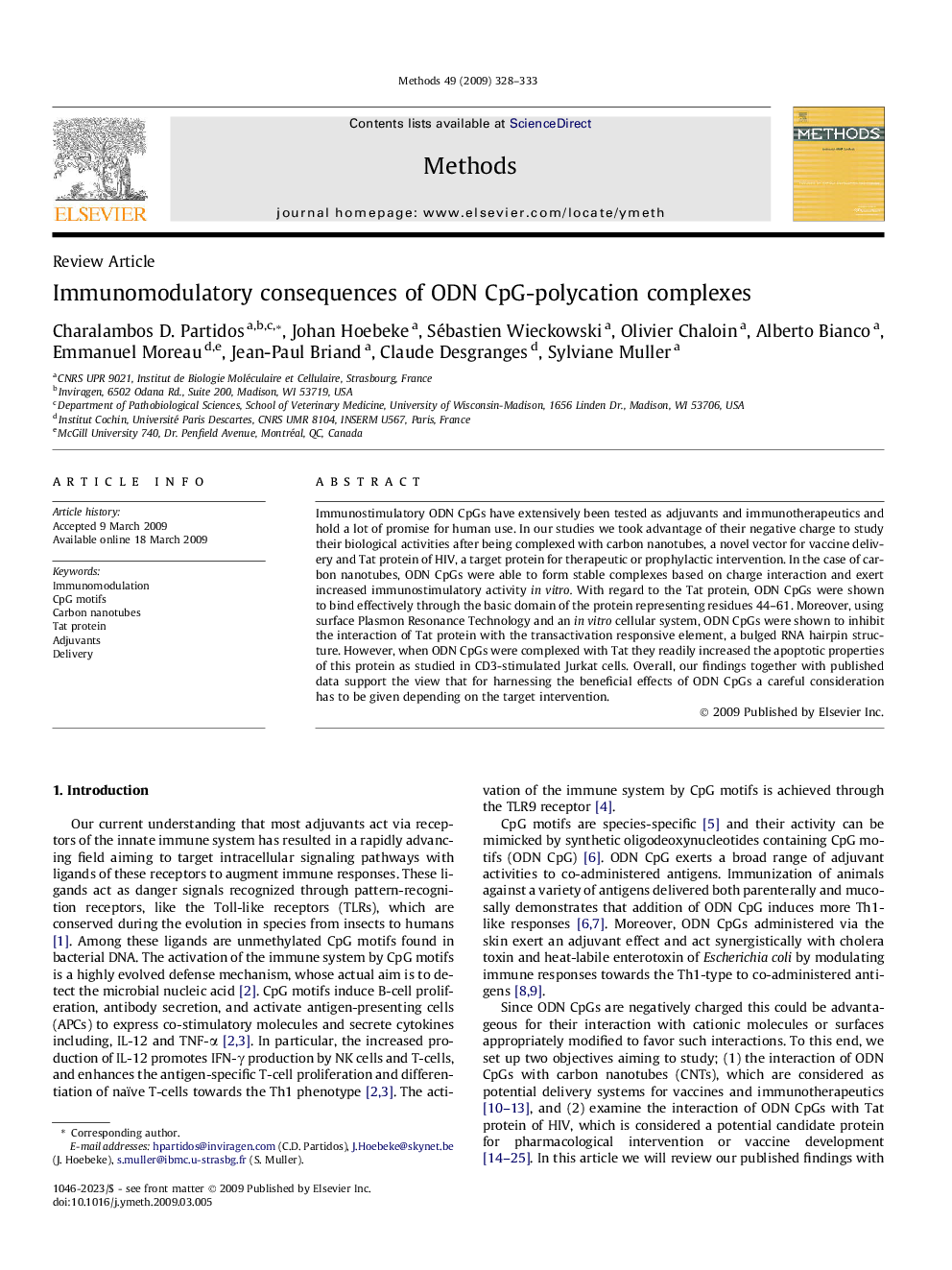| Article ID | Journal | Published Year | Pages | File Type |
|---|---|---|---|---|
| 1993877 | Methods | 2009 | 6 Pages |
Immunostimulatory ODN CpGs have extensively been tested as adjuvants and immunotherapeutics and hold a lot of promise for human use. In our studies we took advantage of their negative charge to study their biological activities after being complexed with carbon nanotubes, a novel vector for vaccine delivery and Tat protein of HIV, a target protein for therapeutic or prophylactic intervention. In the case of carbon nanotubes, ODN CpGs were able to form stable complexes based on charge interaction and exert increased immunostimulatory activity in vitro. With regard to the Tat protein, ODN CpGs were shown to bind effectively through the basic domain of the protein representing residues 44–61. Moreover, using surface Plasmon Resonance Technology and an in vitro cellular system, ODN CpGs were shown to inhibit the interaction of Tat protein with the transactivation responsive element, a bulged RNA hairpin structure. However, when ODN CpGs were complexed with Tat they readily increased the apoptotic properties of this protein as studied in CD3-stimulated Jurkat cells. Overall, our findings together with published data support the view that for harnessing the beneficial effects of ODN CpGs a careful consideration has to be given depending on the target intervention.
